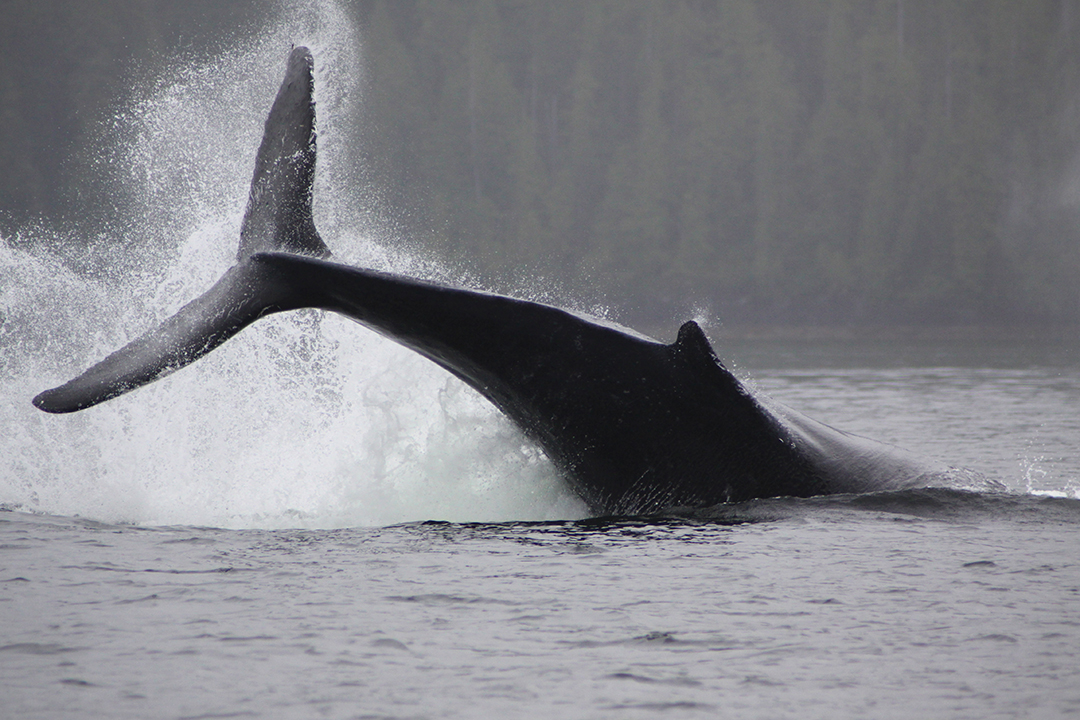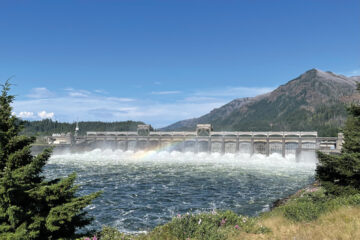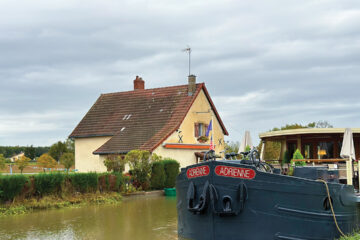The Year the Earth Changed
Exploring solutions for environmentally conscious travel in a post-pandemic world

Twelve days after lockdown started, a resident of the North Indian state of Punjab stood on his roof and blinked his eyes. He hadn’t seen the Himalayan mountain range in 30 years, but there it was, covered in snow, 100 miles away. The phenomenon was made possible by the improvement in air quality after factories shuttered, people and cars stayed home, and airlines canceled flights in response to the pandemic. This climate miracle, I learned from watching David Attenborough’s latest documentary, The Year the Earth Changed (Apple TV+), wasn’t a solo event. Across the planet, people stayed home and the natural world showed its appreciation.

In Florida, with beaches closed, sea turtles swam ashore and nested in the highest numbers researchers had ever seen. In Alaska, where it was 25 times quieter without cruise ship traffic, whale calf survival rates rose significantly. In Africa, where empty safari lodges meant less plastic trash, less noise, and less people, wildlife thrived.

Decision Time in Tourism
So, does this mean that if we care about the environment, we have to stop traveling? Of course not. That’s throw-the-baby-out-with-the-bathwater thinking. Travel, at its best, is a force for good. It’s how we learn about different cultures. It has the power to strengthen the global community, and it makes us better people.
However, travel would be an even more positive factor if we became more aware of our impact on the land and people as we move around the planet. Old school “eco-tourism” got us started in the right direction by reminding travelers to respect the environment, but today, “sustainable” tourism goes a step further and addresses more ways we can compensate for our impact on communities.

Job creation is an obvious benefit of tourism, but in some “budget” destinations, wages are appallingly low. This is particularly true in the developing world where many visitors stay in lodging owned by overseas interests and buy souvenirs made in foreign countries. It would be more beneficial if we avoided over-touristed areas and contributed to the local economy by staying at and shopping in local businesses.
Every time I look at the mola textile I bought in Panama, I think of the smiling face of the woman who made it. Likewise with the Maori carving in our dining room. The figures in this handsome piece depict a famous legend, but I wouldn’t know that if I hadn’t spent time talking with the artist who created it.
Getting There and Getting Around
In terms of air pollution, the flight you take to reach your destination is more damaging than anything you will do on the ground. Purchasing carbon credits will assuage your guilt and do some good, but it would be more sustainable to take fewer, but longer, trips. Unlike employed Europeans, who have scads more paid vacation time every year, Americans traditionally have tried to stretch their few weeks by taking multiple brief jaunts throughout the year. Now that we know we can work remotely, can we fly less and stay longer?

This “stay longer” strategy also enables a more authentic travel experience. We can give back to the communities we visit by volunteering in schools, supporting local nonprofit organizations, and connecting with professional counterparts. For example, Hawaii makes this easy with their Movers & Shakas program. moversandshakas.org
Longer stays also enable visitors to learn to speak the local language, cook the regional cuisine, and appreciate the culture. And, no matter how long you are there, the sustainable option is to either get around on public transportation or rent an electric or hybrid vehicle.

Join the Movement
Norway wants to make its fjords emissions-free by 2026, which would force changes on cruise operators. Will Alaskans raise their voices to save whale calves? Will Floridians campaign for turtle time on their beaches? Are we speaking up for San Diego?

Help is available to assist with more thoughtful travel choices. Elevate Destinations plans custom itineraries that combine luxury, meaningful exchange with local people, and proactive conservation. Discover Corps offers small group “vacations with purpose.” elevatedestinations.com, discovercorps.com

A wonderful thing happened while we were staying home. The earth changed, people noticed, and, if we make the right choices, they will lead us to longer, slower, and more meaningful travel experiences and a far healthier planet.





Comments